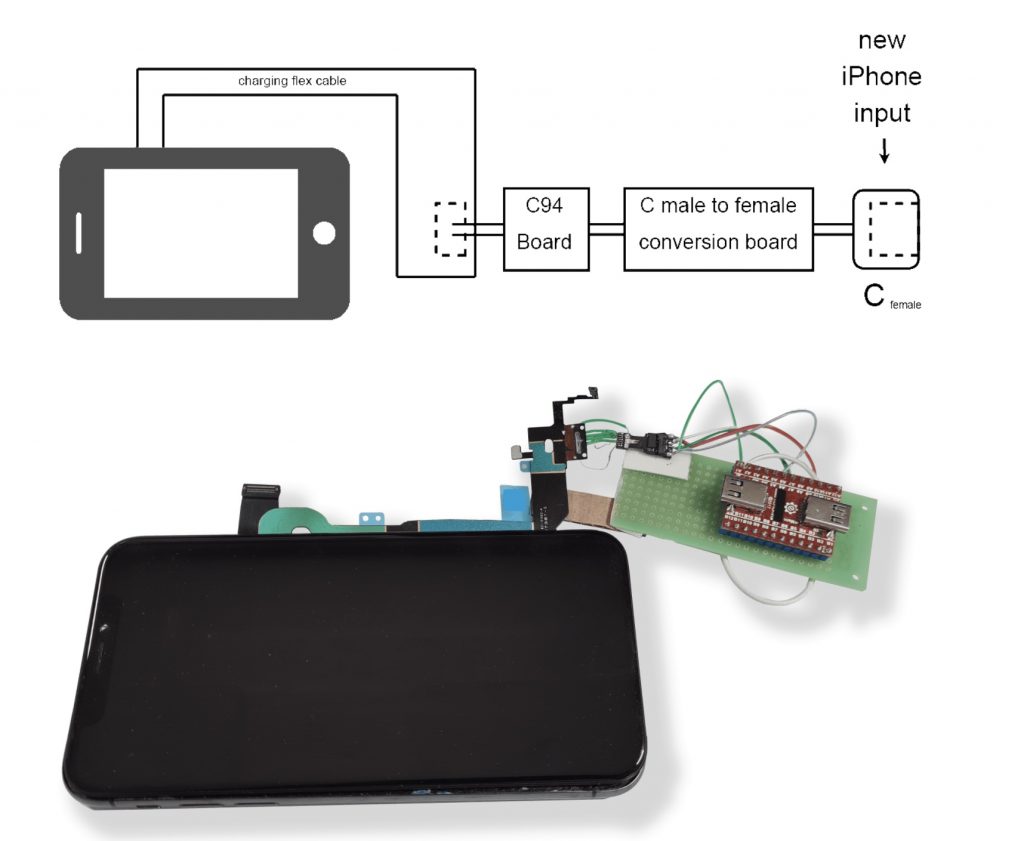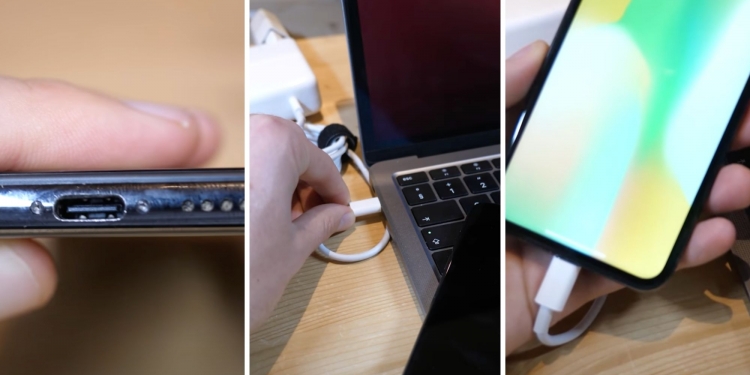Most Apple users would tend to agree that it would be more convenient for iPhone devices to have a USB-C connection instead of Lightning. And in a YouTube Short called “World’s First USB-C iPhone“, Ken Pillonel claims to have actually made that dream a reality.
Pillonel spent a few months on the project, with a blog post in May showing his plans and a video that goes with it where he showed a DIY prototype. It doesn’t look like it would be an easy process—as Pillonel says he “reverse-engineered” Apple’s C94 connector in order to make a PCB (printed circuit board) with a female USB-C port.
And on 9 October, Pillonel posted his YouTube short announcing that he successfully modified an iPhone X to use a USB-C connection. He showed off the phone as it was able to be charged by a USB-C cable, and he also says that “data is also supported”. He also says that he is working on a full video to show how he made it in more detail.
“This is it. I’ve finally built the World’s First iPhone with a USB Type-C port. It supports charging and data transfers,” wrote Pillonel.
In his blog post, he explained that his process for the prototype started with him needing to “break it done into steps”. His process included testing and making USB-C to USB-C charging work on the iPhone—which was pretty diffucult.
“… I tried to charge with a Type-C to Type-C cable (an e-marked one, similar to the one to charge a Macbook Pro). It works, but then I try to plug the cable the other way and nothing happens. This means that reversibility doesn’t work that easily and it is definitely a requirement I have for the project,” said Pillonel.

Another step that he had to do was to remove the female Lightning port and solder wires to a bare C94 board. He could then replace Lightning with USB-C, but this was his process for his prototype.
“I will need to fully reverse engineer the C94 board to integrate it to my final board that will fit inside the iPhone. The main struggle will be making all fit without losing functionality,” continued Pillonel.
While this might seem tempting for you want to want to try doing the same thing on your own iPhones, it really doesn’t sound like it should be copied by anyone who aren’t used to fixing electronics. Pillonel has a background in electronics and has studied for a Master’s degree in robotics at the Swiss Federal Institute of Technology, EPFL—meaning he has the skills and knowledge to pull this off.
Another YouTuber had recently shared a video of making probably the only iPhone 12 that can use 5G mmWave with two physical nanoSIM. However, Apple’s Repair Terms and Conditions also state that unauthorised modifications could deem an iPhone to be considered as “Out-of-Warranty” when in need of repair. So, take note of that before you do something you can’t reverse.
Apple has slowly been migrating its products over to USB-C connectivity, with their iPad mini being the latest to make the transition. The iPhone has yet to switch to USB-C, although the European Commission proposed a legislation in September that could designate USB-C as the standard charging port for all mobile devices.
[ SOURCE, IMAGE SOURCE ]








